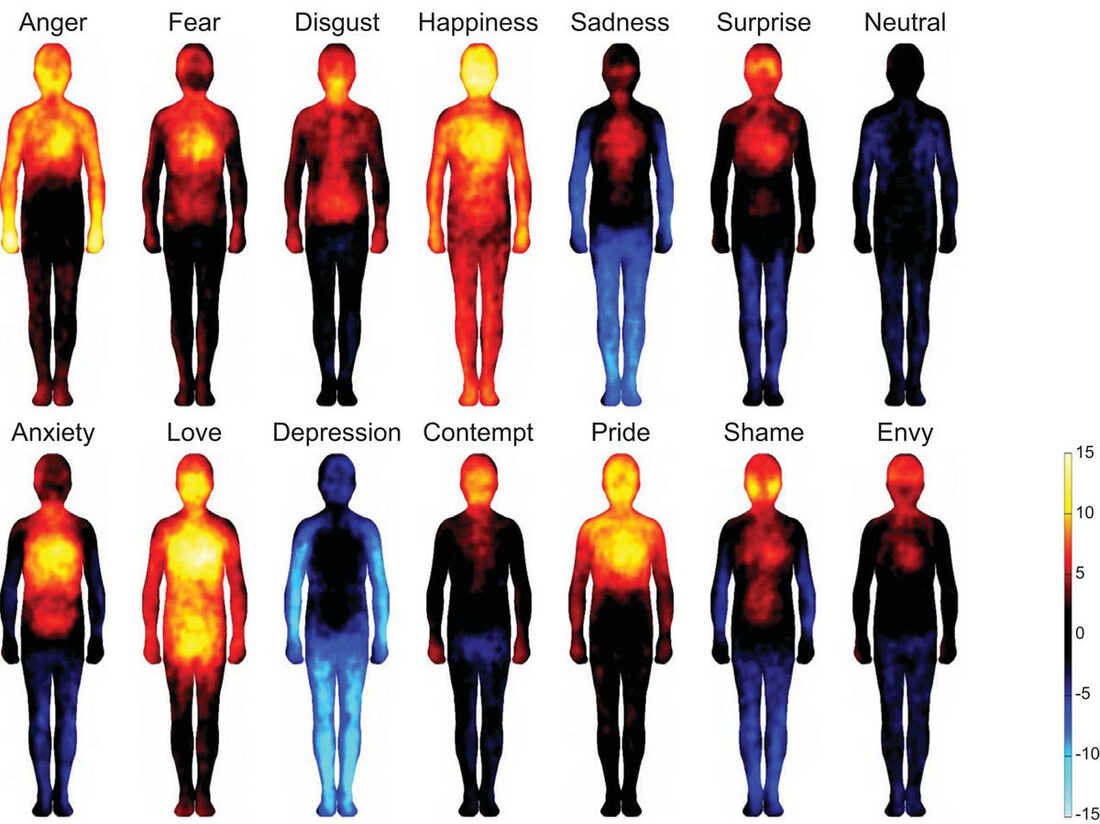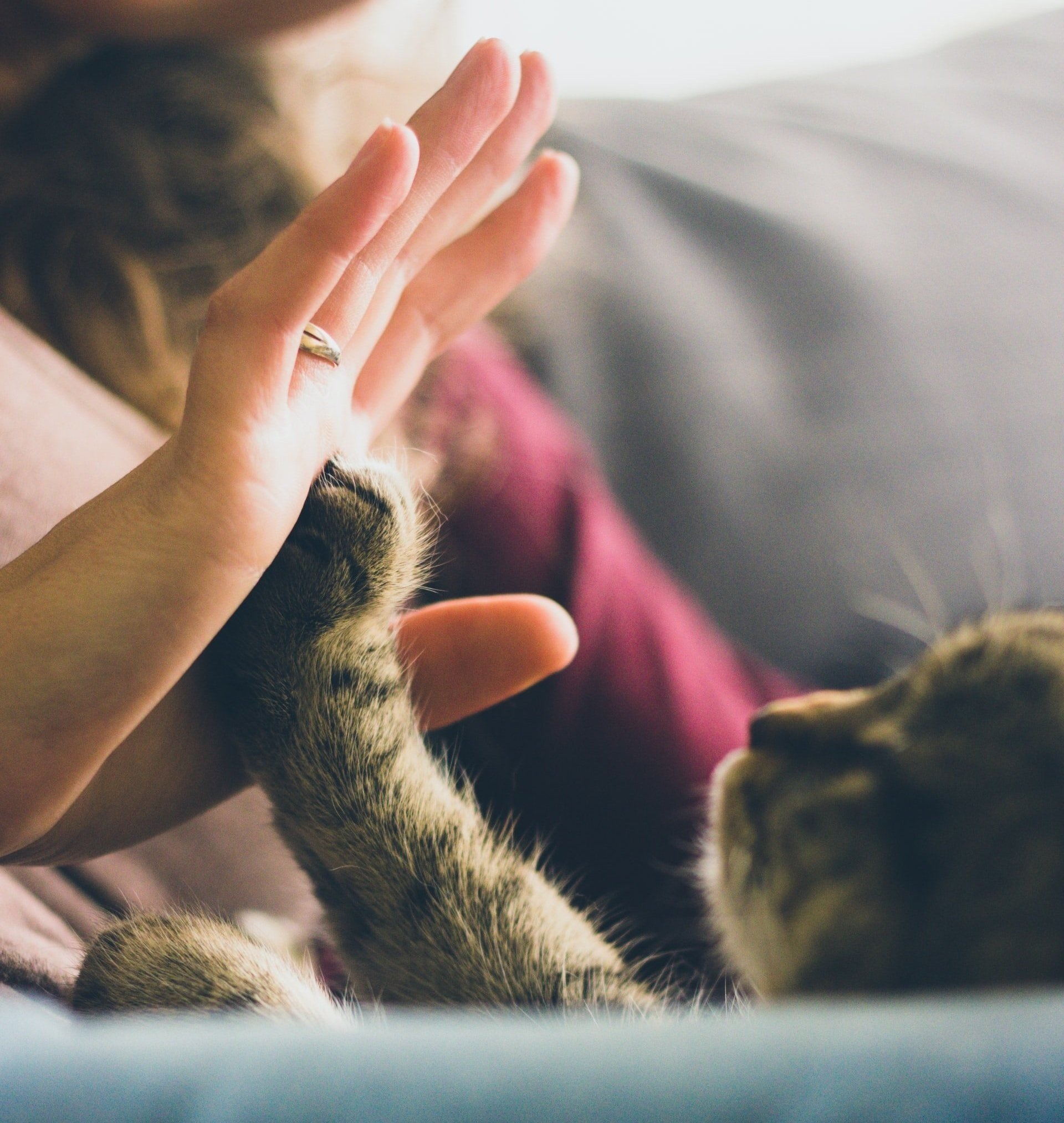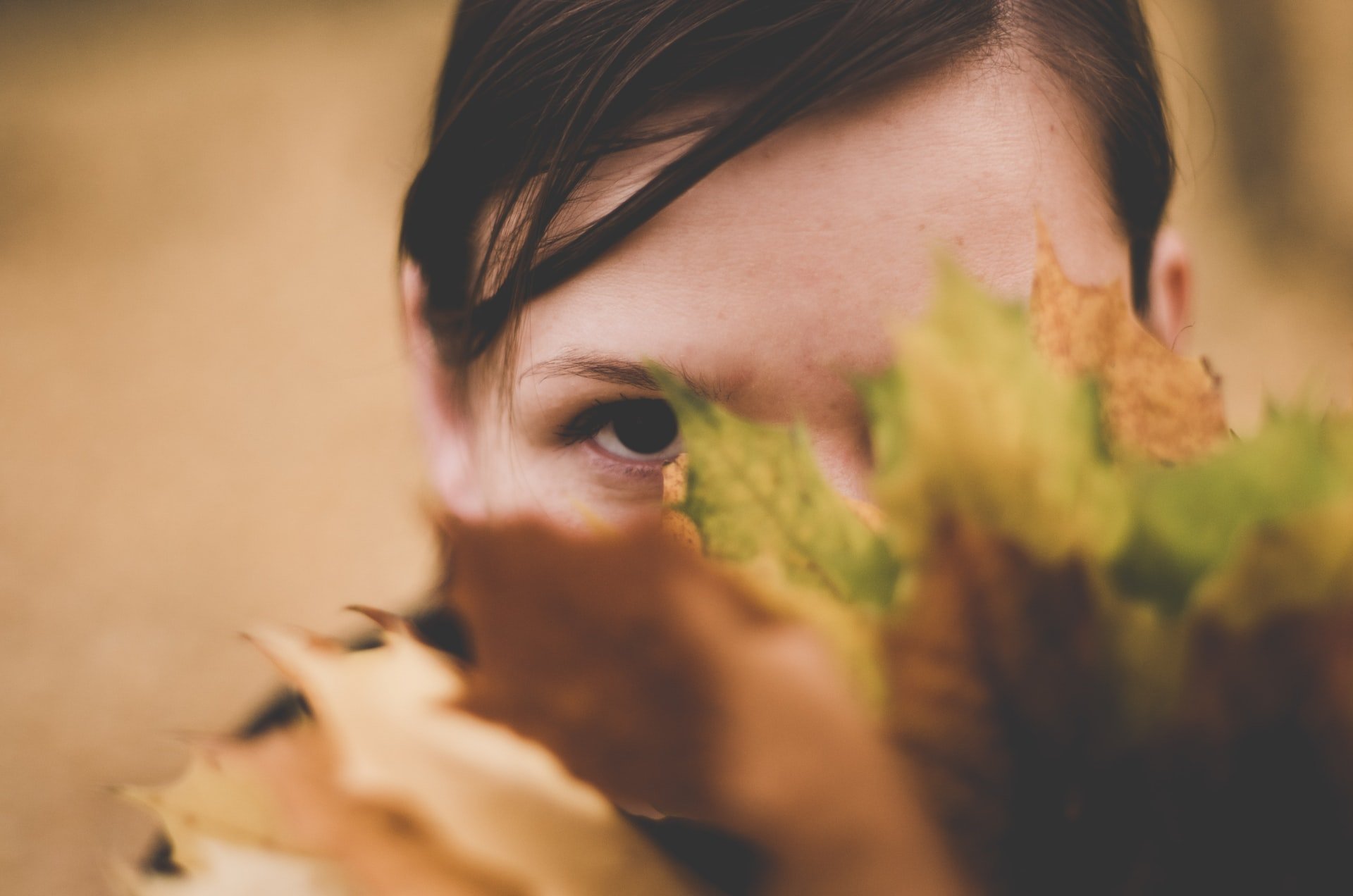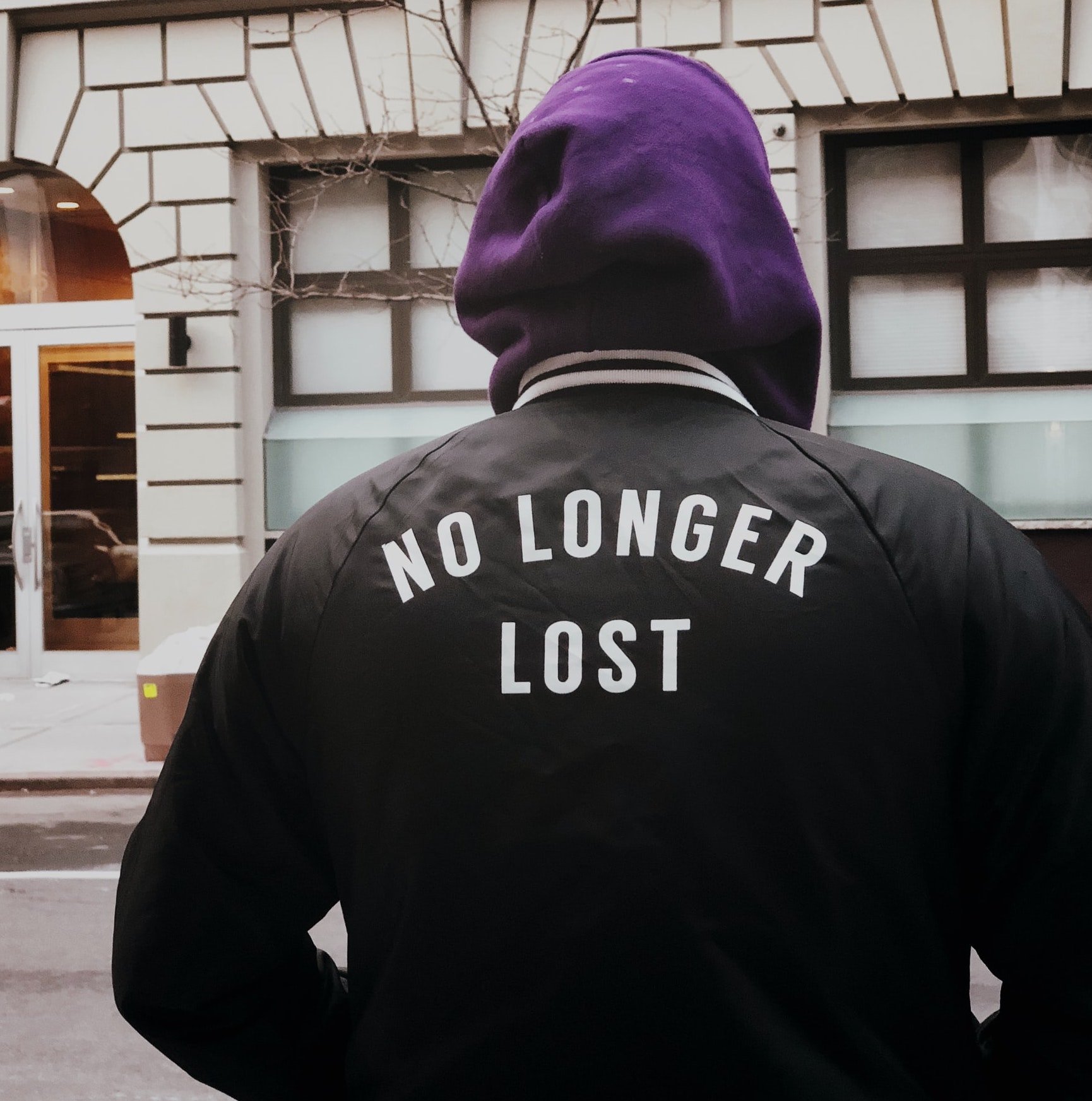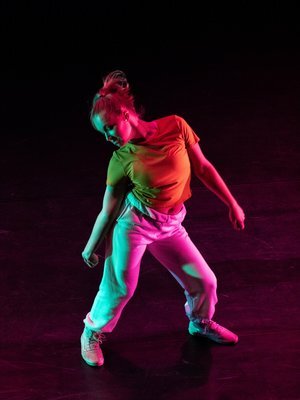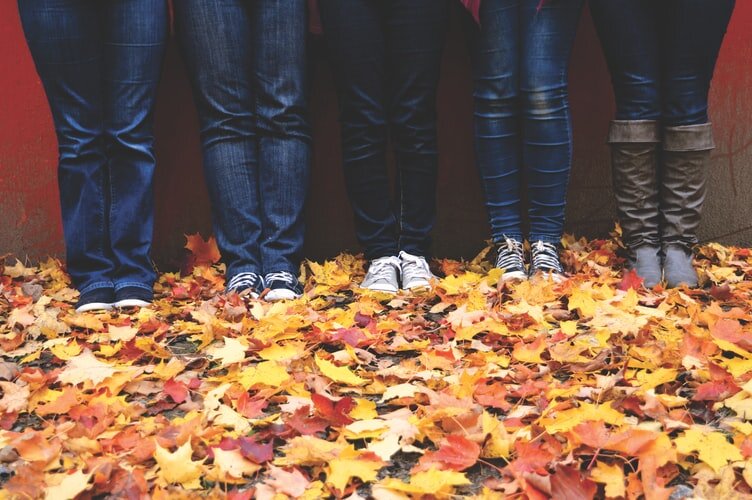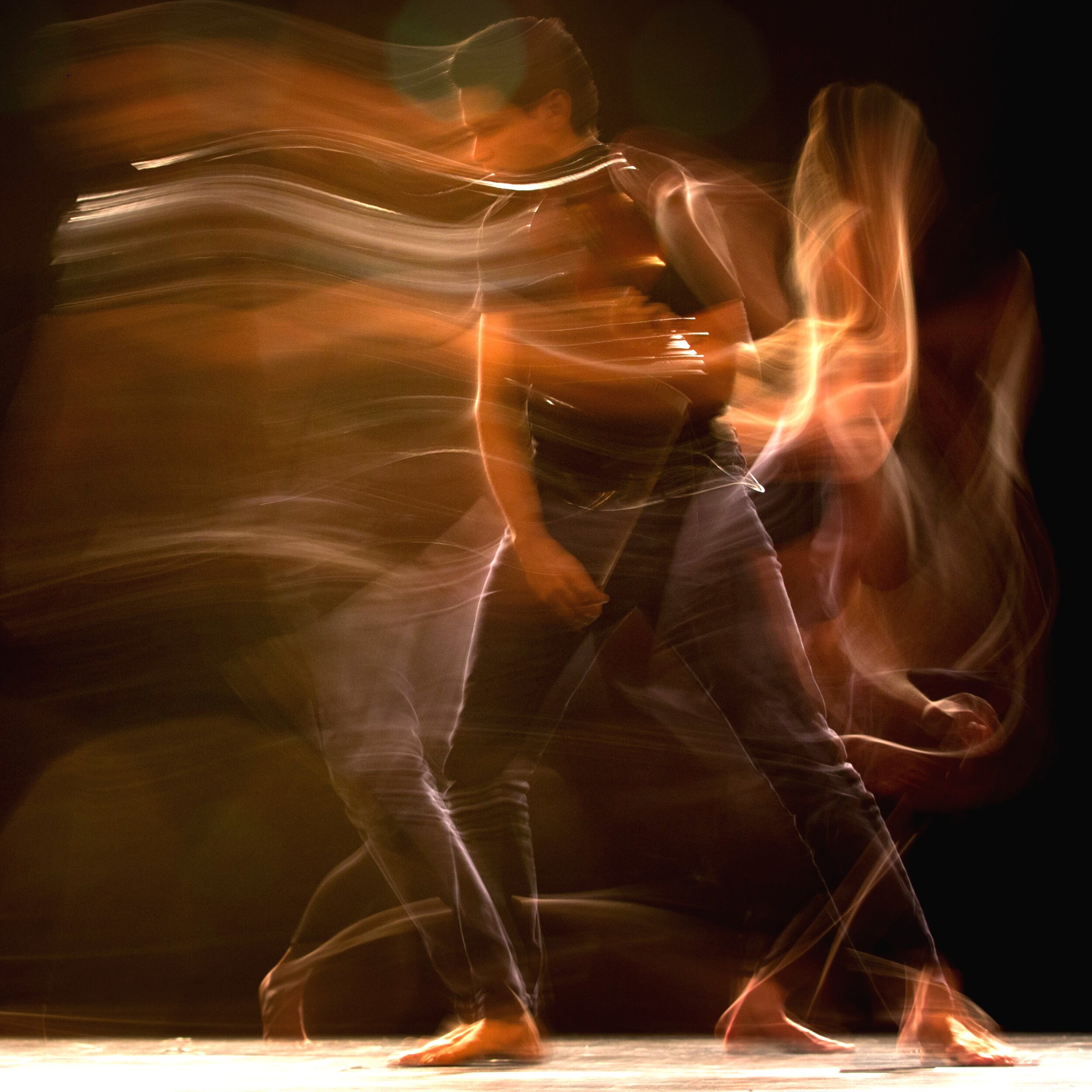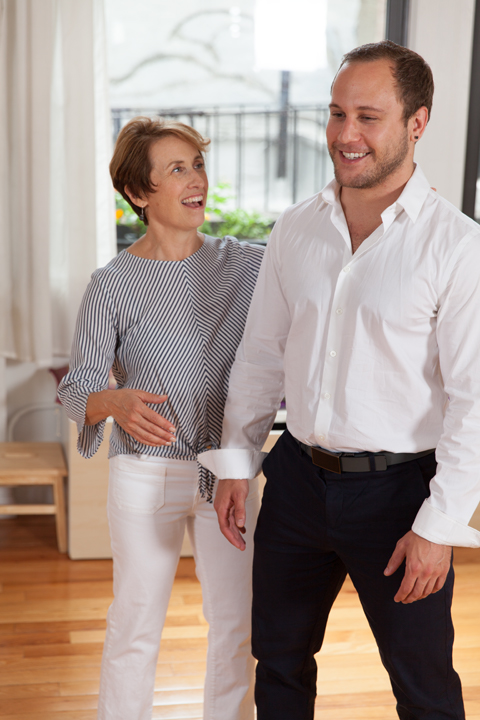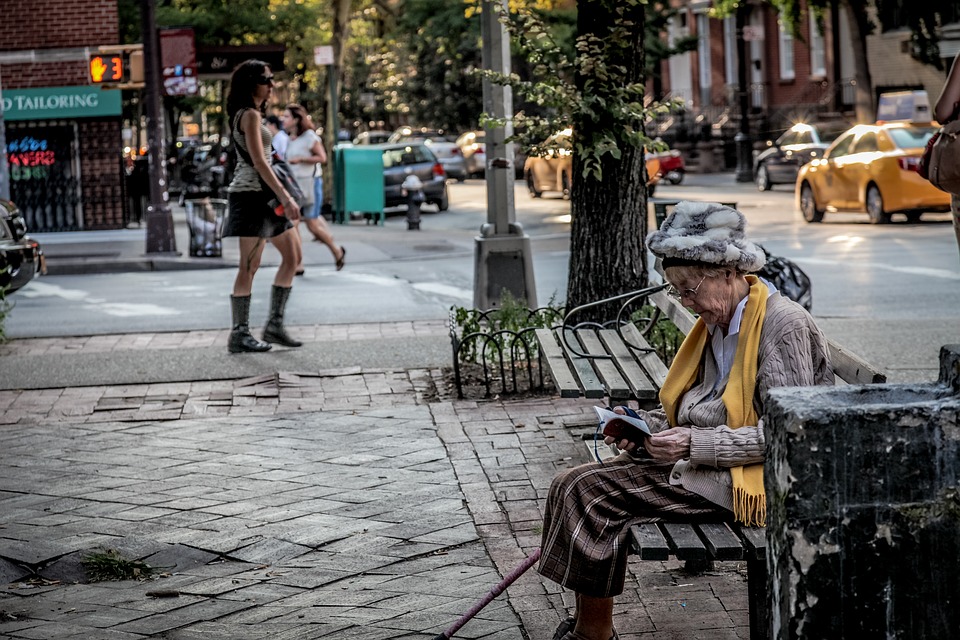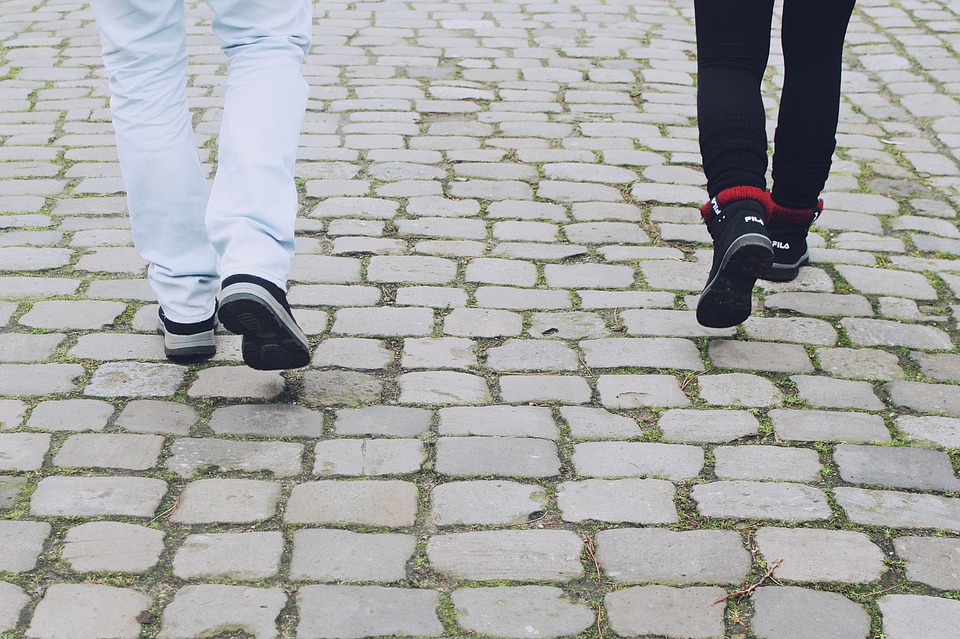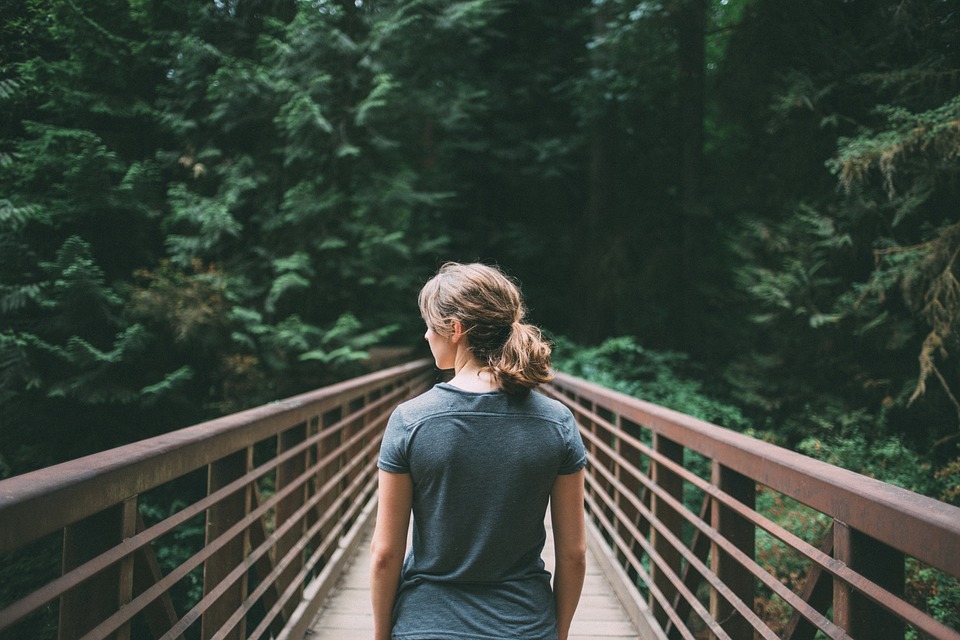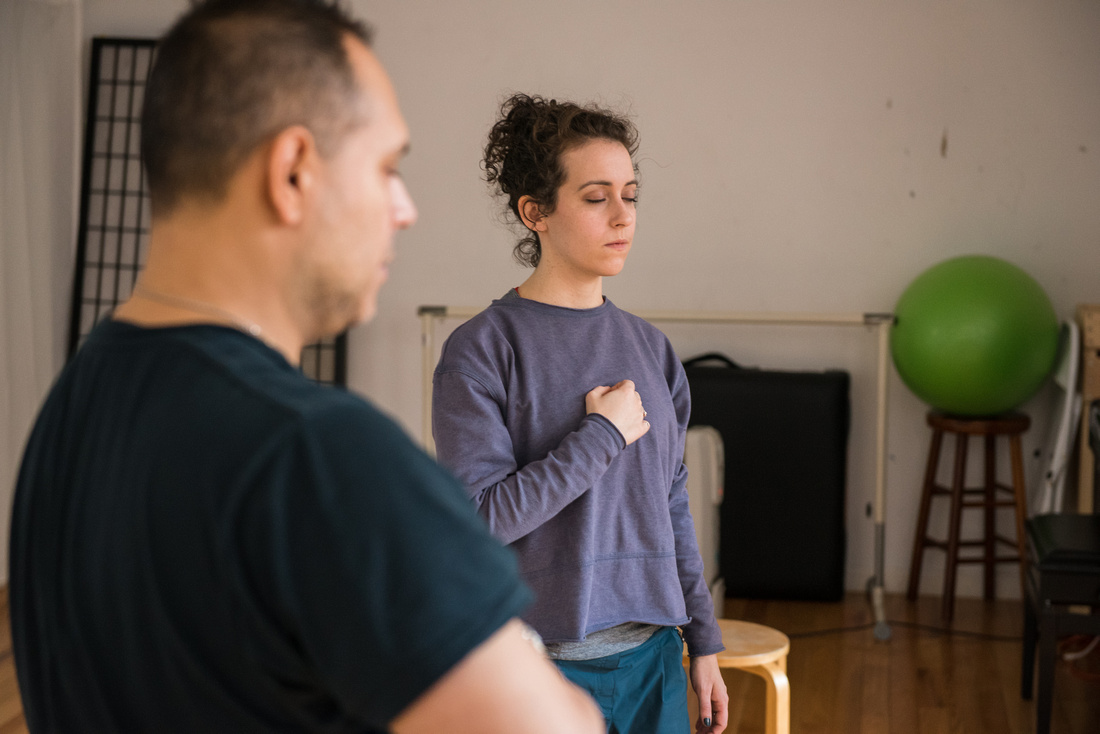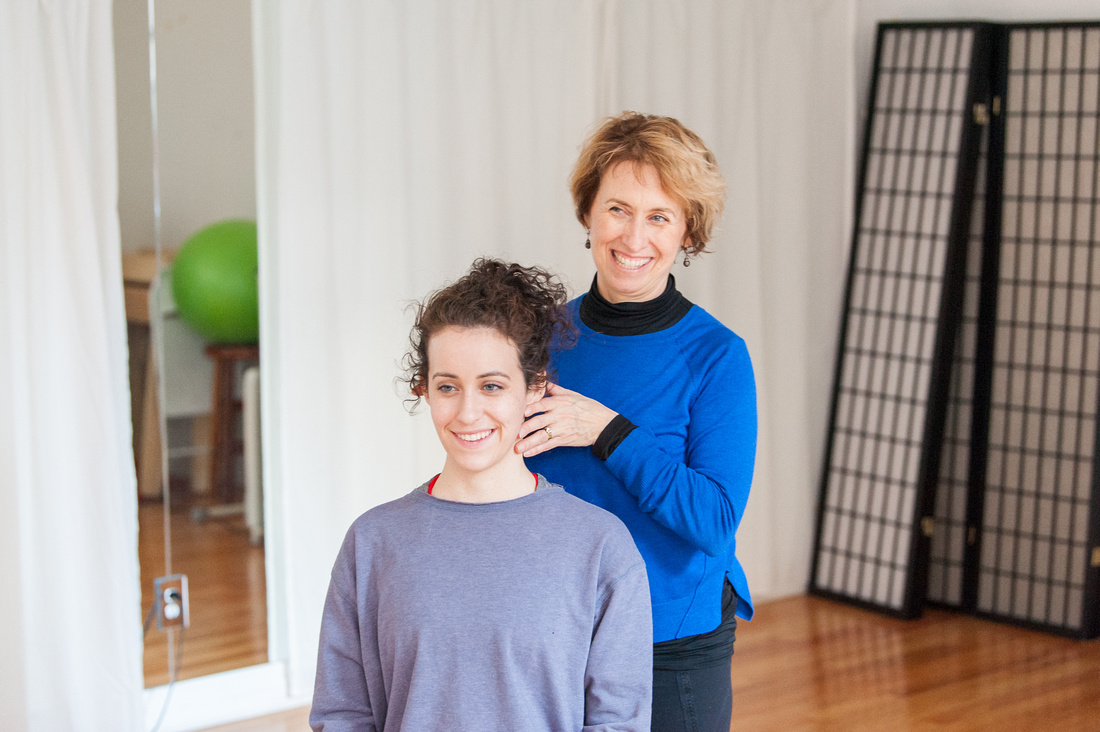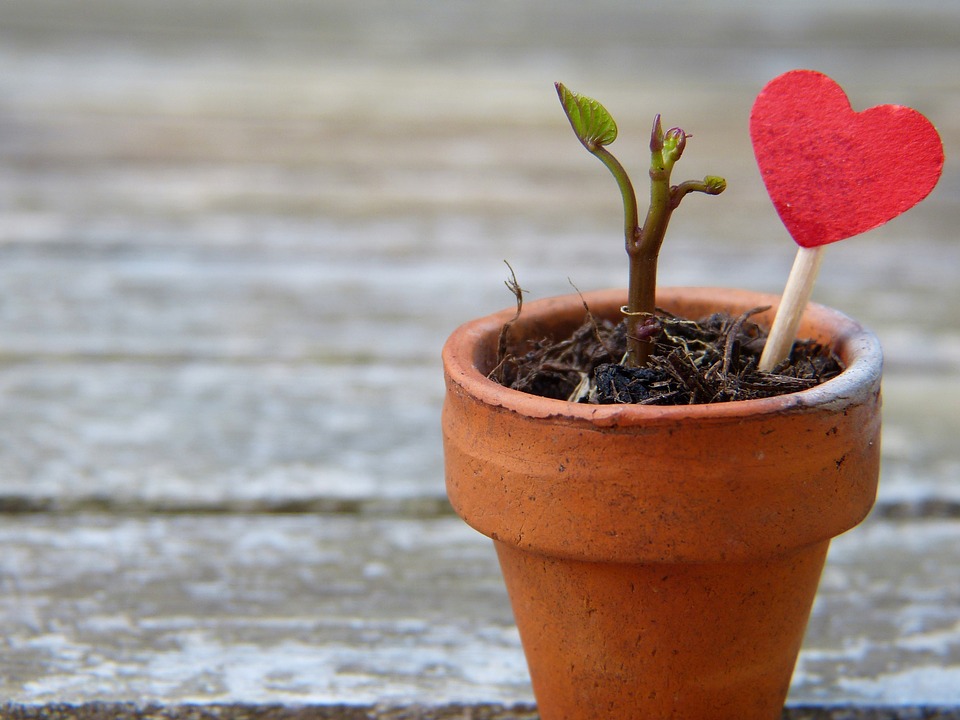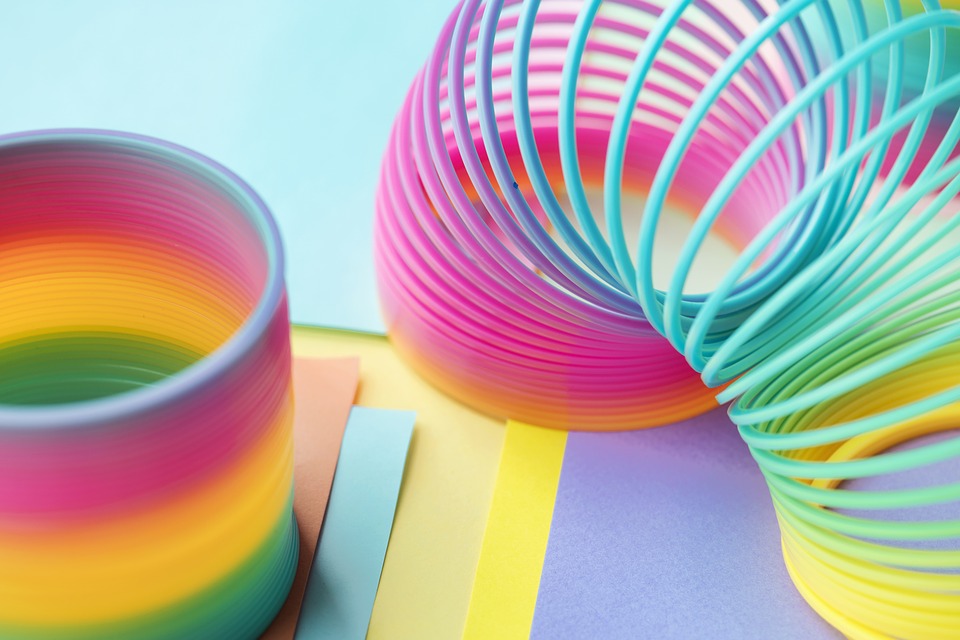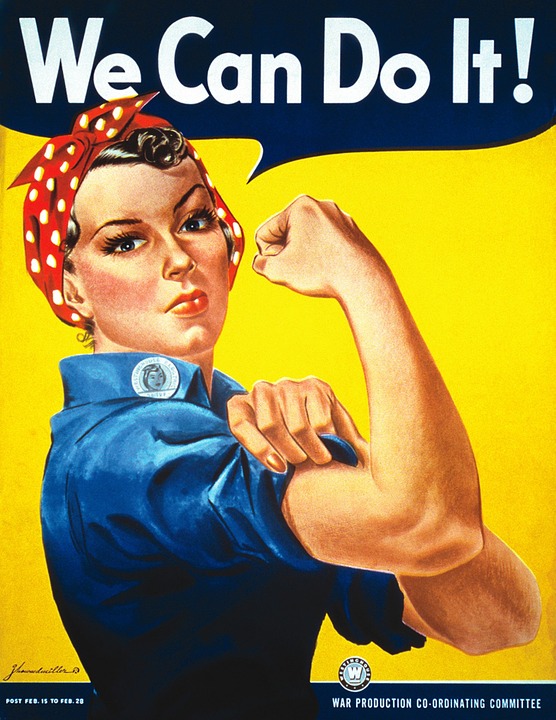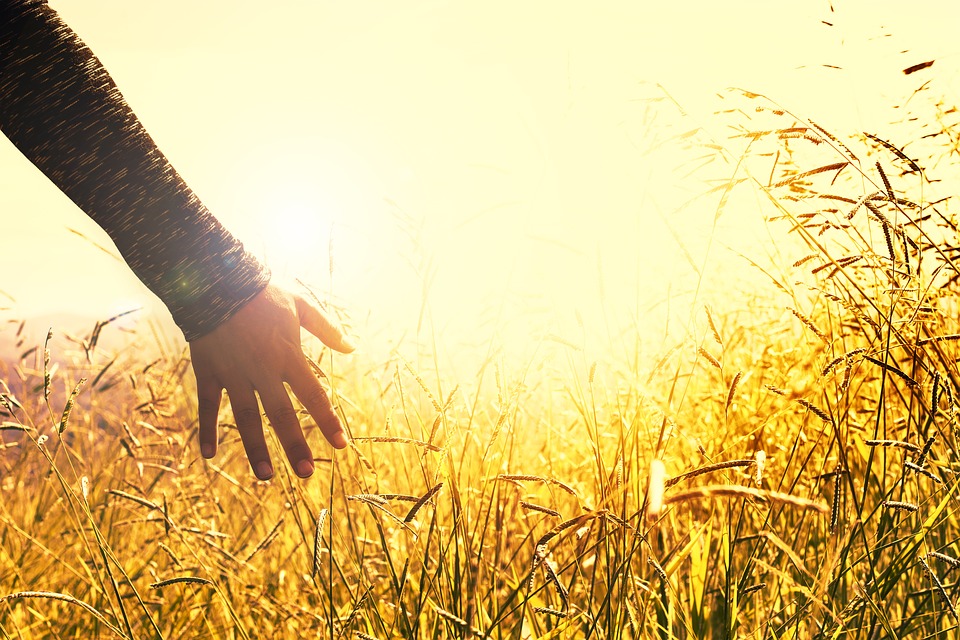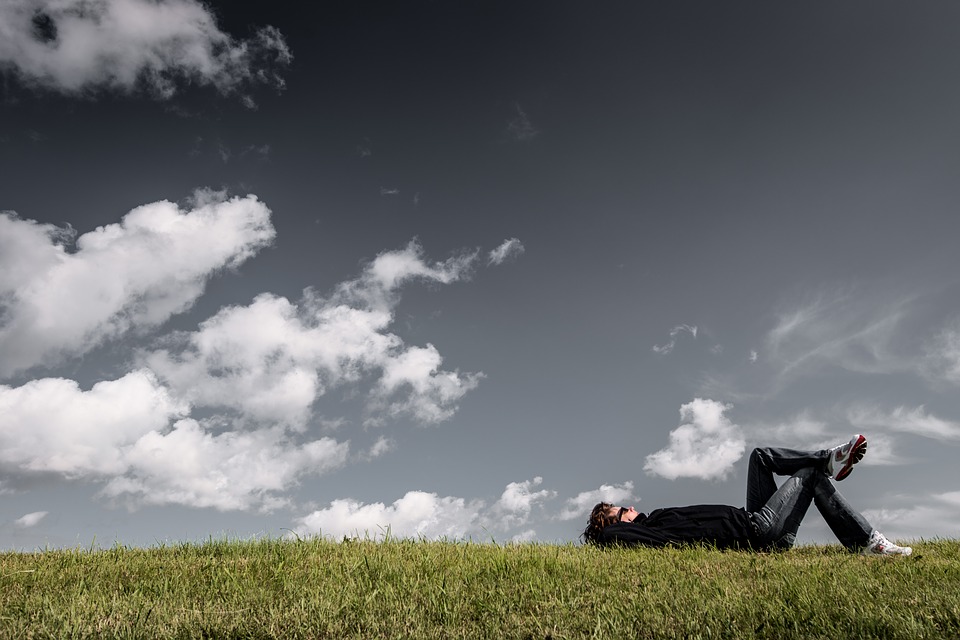
How You Move Matters
Free Alexander Technique Exercises, Tips, and Resources
A Lesson from Swallows
It’s September and I am getting a lesson in lateral collaboration from the flocking birds. Rather than a top down group organization with one executive leader, the flock as a whole moves together, sharing the leadership. Within large flocking groups, called murmurations, changes in direction happen from any single bird, passing like a wave or spiral throughout the group. Scientists have found that the movement changes each bird makes happen faster while flocking than when reacting to a loud sound or other external stimuli. This kind of embodied intelligence is efficient and maintains the steady integrity of the whole community.. Embodied intelligence is also vital for humans, within our own selves and in how we interact with each other.
Photo by Rowan Heuvel on Unsplash
Think for a moment of the flock as a metaphor for the whole person. Consider how collaboratively our bodies can move, as an integrated system - without second guessing ourselves. I recently wrote about my experience of interference within my internal communication system (proprioception). It took a lot of extra cerebral work to compensate while my sprained ankle healed. I have a renewed appreciation for how much daily effort goes into simple movement if there’s an interruption in the communication The metaphor of the flock helps me recognize the excessive mental work. Regaining my inner flocking involves letting go of what is not needed, especially that urge to get ahead of what I can sense in the present moment.
Our kinesthetic sense, the sense of moving in space and the flow of movement, is a key part of our embodied intelligence. Trusting and relying on this sense, can release us from “being in our heads” or over-thinking our actions. If the birds in flight were to anticipate the changes in direction they would interfere with the smooth transitions of the group, and the soaring pleasure of unified movement.
Whether it’s hard won or part of the invisible flow of day to day activities, collaborative movement brings pleasure, a sense of ease and unity. The murmuration of swallows is beautiful to experience if you’re able to get out in nature this time of year. .
Here’s an example:
Tree Swallows moving together, creating patterns as they fly. A lesson in collaboration.
Kinesthetic sense? Try this:
Here’s a simple following experiment to try with a friend, touching fingertips.
1. Sit or stand facing each other and connect with just the tips of your index fingers. One person will be the leader, moving their hand continuously and smoothly. If the follower is sighted, they will close their eyes as they move with the leader.
Could you notice what it’s like to follow without anticipating the next move.
2. Switch roles.
Did you notice how much you are relying on your kinesthetic sense? – was this easy? or do you find your executive mind wants to interfere?
3. Return to touching fingertips. This time you are a flock. The objective is to move smoothly and continuously together. One person will start the movement but at any moment the other person can redirect the movement. Try this with your eyes closed
Did you find some lateral collaborative flow?
Ready ...or not?
Are you ready?
This is the first in a new series on cultivating curiosity. In earlier posts I offered some tools from mindfulness and Alexander Technique for grappling with strong emotions. One of the tools was curiosity. In AT we develop a curiosity for how we go about things, how we react, how we make choices.
Let’s investigate the AT invitation for emotional-physical-social-spiritual awareness so that we can be more simply present!
Simply present? Sometimes simple is a big deal! …Or not.
What if we just met up and I asked you, “How ya doin’?”
That seems like a simple question…
What does it take for you to answer that question honestly? What shifts take place in your body? Where do you sense tightness or looseness?
Do you search for feelings in your body to help you to answer that question? Do you recognize any of these feelings enough to name them (shyness, flirtation, regret…)?
Do body located sensations help us listen to each other with more compassion?
Have you noticed how you share emotional sensations with a person you empathize with? Or not?
We have expressions, ”I feel you!”, “you make me feel…” or “No, I feel really differently”!
I’m looking at articles today about emotional centers; where we absorb or express feelings in our bodies. There is a well known study from 2013 about the experience of emotional embodiment, showing areas of the body where people report feeling activated and deactivated in association to emotional states.
https://www.npr.org/sections/health-shots/2013/12/30/258313116/mapping-emotions-on-the-body-love-makes-us-warm-all-over
Looking at these images evokes feelings in me — particularly empathy for what it was like to participate in this research. How would I feel ready to report my embodiment of emotions? When do I feel safe enough and ready to evoke strong feelings?
Pause assumptions about awareness.
I wonder about expectations or assumptions of openness and awareness in AT lessons and classes. Are we making the time to be ready to experience and understand sensations related to movement, let alone the embodied emotional sensations?
Seems like a lot of awareness is being asked for.
Is this easy for you? Hard? Somewhere in between? I would love to hear from you about this.
We’ve all been trained to disembody to some extent. Some of us have been taught about our emotional intelligence. But not equally.
Many people have never been given a safe invitation.
An offer
Let’s give ourselves a moment for readiness. No pressure, just a simple activity, using curiosity.
I invite you to use your tactile sense. Identify something in the space around you that interests you. That would be interesting to touch.
Imagine touching it. Imagine the texture, the temperature, imagine your fingers moving along the surface or resting in one spot. I like this moment of Not touching it, this gives me a moment to get my sensory system ready and available.
Now, touch the object. Is it pleasant to touch, or not? If you can hold it, does it have weight? Do you like holding it, or not?
Orient yourself to the floor using the sensations through your feet. (Is it very hard? Is it cool? Can you rest your weight on the floor?)
Take a fresh look at the space you are in.
Are you feeling ready?
Now, can I ask you “how ya doin”?
And could you ask me, too?
…Or not.
Feeling Lost? Where to Start.
Where am I?… locating yourself is the first step.
Recognize where you are, especially when you’re under stress, feeling anxiousness or the tidal pull of habit. “You have to be somewhere to go somewhere” (Kari Margolis) is good acting advice, and good life advice. Where you are right now is probably quite familiar once you pause and take it in.
In my previous blog I described RAIN (Recognize, Allow, Investigate, Nurture/Non-attachment), a mindfulness practice for stress reduction. Let’s start by unpacking the R (recognize) – and finding the connection to our Alexander process.
If you are feeling lost in an emotion or feeling an all too familiar pain in your body, try this 3 point process:
Pause and recognize where you are.
Name the place (I am on the subway, I am in the kitchen, I am on the sidewalk, I am at my desk… you get the idea).Now continue recognizing, getting more personal and specific.
Recognize the feeling in your shoulders? Is it a tight, burning tension? Or is it like a cold brick? Is the sensation in your stomach a cramp or a flutter? Or is there a tightness in your chest?… breathe with it and describe it.Name the feeling or emotion that goes with the sensation
Naming will help you recognize. (This is dread, this is regret, this is anticipation…)
And yes, you do have time for this – emotional states of being do change, but not in a hurry. Can you let go of seeking comfort or numbness for a few more minutes? This takes a bit of courage –you’ve got it.
Have you noticed that pain and fear are the close companions of empathy and compassion? Recognizing your fallible humanity strengthens your connection to others. You are directing kindness to yourself by not turning away from the feelings - not pretending you aren’t exactly where you are.
"Having compassion starts and ends with having compassion for all those unwanted parts of ourselves”.
(Pema Chödrön).
Photo by Jon Tyson on Unsplash. . Photo by Artur Rutkowski on Unsplash
Character Transformation Technique Starts with You
How does AT factor into the very intimate and imaginative (sometimes magical) experience of embodying a character?
First know thyself! This comes with practicing lively awareness: emotional, physical, social. Awareness of self in the present place and moment. When we develop our interactive and personal awareness, extra habits and tensions can be paired away. Release of this “extra stuff” clears the way for more creative choice. We can deepen our sensing and gather more specific knowledge -- knowledge becomes tools.
Making Choices means knowing you have choices! Once you have a strong inner communication going, once you are consciously making choices about yourself, then working within the particular tendencies and limits of a character makes sense. This is when you can play! Practicing AT means practicing being clear enough to see the options. The story often gets clearer when we see the pathways laid out in the text. The fun increases!
Try this at home:
To highlight noticing you have choice, use this “classic” Alexander Technique etude:
Begin by resting your back on a wall, with your feet 6-8 inches off the wall. Each of us is formed slightly differently, but it’s likely that your pelvis and ribs are making contact. No need to flatten your back or put your head back on the wall.
Rest back on the wall -- receive the support. See what is going on around you, and decide just to stay there.
Next decide to experiment with using your legs to slide down and then up the wall. Place your hands lightly on your neck (SCM muscles) and notice what happens when you slide down, then slide up. Are you surprised by what you notice? If you tensed your neck or dropped your head, whatever the extra “thing’ is, decide to let that go.
Decide you could just wait and not not do that “thing” (tensing). Give yourself full permission not to do it. Look around the room instead. Notice how you feel - what emotions or lack of emotions come up?
Try this workshop:
Blood / Bone / Breath - Character Transformation Technique with myself and Witold Fitz-Simon.
Explore. Imagine. Transform.
Discover how your own structure: your blood, bone and breath, can spark your imagination for embodied character. Similar to animal work and mask, this technique is elemental to the creative process of character transformation but approaches transformation from a new perspective. We have so much to work with as actors -- how can you use your bones, blood, and breath to transform? Stop by and find out. Registration is open at ATMotionCenterforActors.com/Classes Come prepared to explore a character of your choice.
Lively focus is a lively choice
What grabs your attention and what fades from view?
Bright sparkling lights can take over your focus temporarily, and then your interest moves on. But when something becomes a priority, everything else fades or blurs a bit. Even loud sounds, like fireworks, can become background if your attention is pulled elsewhere.
A person’s attention is changing all the time. Attention is subject to choice. While it’s hard to maintain a singular focus that blocks out everything else, we can and do choose to place something in the forefront of our attention while letting other things be in the background.
In today’s Margolis Method class, we worked with primary and secondary focus as a theatrical tool. In other words, what do I want the audience to recognize as is the most important aspect of my character’s experience? In any given circumstance, what is primary and what is secondary?
Even if you are not an actor, this is a question you are dealing with all the time when you are trying to communicate something complex. Priorities are chosen. Often conflict occurs when there is a disagreement about primary versus secondary priorities.
Applied to nervous anticipation, changing your primary focus can reduce your stress. Instead of letting your nervousness take front and center of your attention, can you make it a secondary or background issue? Can you bring something of more practicality or even of pleasure into your primary focus?
Exploring your options starts with a pause. Open up your senses to what is around you. Use your peripheral vision or widen your scope of listening, try smelling or staying with what you are tasting a bit longer for the subtle undertones.
What do you find in the background (or secondary field of attention) that you would like to bring into the foreground of your attention?
Try this AT Motion experiment:
Primary/Secondary focus walk
Walk A: Take a walk in a familiar place. Start to notice the sounds around you. As you walk let listening and sensing be your primary focus. You might tune into the noises of the city or overheard conversations. The sounds might evoke awareness of your other senses. You will still be aware of decisions your will make about direction in space and your coordination - but let that be secondary. Let listening and sensing be primary.
Walk B: Now make a switch. Instead of focusing on listening and your senses, let your spatial choices and coordination be primary. Use Alexander’s self-directions for springing into expansion, UP and OUT into space. Let your freedom of motion be directed upward and outward. Let our energy support the upward freedom with downward support. Walk with that vertical dynamic. Include the dynamic of volume. Let your opening into width and depth be supported by a strong inward support (your core). Now let the swinging of your arms and legs bring flow into your stride as your choose your pathway or route. Coordinating with spatial direction is primary but you will still be aware of what you are taking in through your senses - but let that be secondary.
Notice the differences in your experiences in walks A and B.
Notice change.
Words: Choosing My Emphasis (Plus Free AT Exercise)
How do we choose our words?
I’m a bit awed by the power of words and frustrated by the abuse of this power in forums like twitter. I have to admit some fatigue at how difficult it is to dodge the effect of words, so that sometimes I try to rush past them or tune them out! They touch off very deeply felt beliefs, evoke past experiences and plant the seeds of our impulses.
We’ve been grappling with the impulses born from words in the studio lab this past month. We’ve explored ways of being through embodying the catalyst of a word: communicating through gesture, breath and action. We found ways of expressing monologues non-verbally, without sound. This month we are speaking the words, connecting thought, gesture and sound.
Spoken words resonate. The sounds waves resonate through our bones, while the associated meaning changes our way of being. Words offer choices in how we handle them and examine them. How we place emphasis is a choice that shifts the impact of a word. Just by slowing down a bit, we can notice the effect of our choices of emphasis on meaning.
I like to play with meaning and emphasis while I’m walking down the street.
Try this:
An Experiment- "Words and walking”:
Try this experiment about emphasis and embodied meaning the next time you are walking…
Start with this simple, true statement: I AM WALKING ALONG THIS STREET.
Divide it into 3 possible emphases: I, WALKING, STREET (who, what, where)
Play with emphasis.
1) Let’s start with the emphasis on “street."
I am walking down this street - this particular street. What is around me on this street? What is in my immediate field of attention? Am I passing under a sidewalk shed, past construction? Are there trees? Trash? Other people? What kinds of buildings are along this street? Are there cars passing by quickly or is the traffic dense and slow? Looking up, I can see the sky and feel the quality of the air, the humidity, the temperature variations, is there a breeze on this street? This street, right now!
2) Now emphasize “walking."
What am I doing? Oh, I’m walking! What’s going on with my walking? Am I earnestly attending to the efficiency of my walk? Or am I mostly oblivious to the sensations of walking? Do I dare try out a funny walk in public? What are some of the specifics of walking? How are my legs swinging? How do my feet contact the ground? Can I sense my rhythm? What are some of the AT cues I’ve been using for walking - like letting my knees release forward, easily, from the back of my knee? Can I release extra weight or tension as I walk? What about Alexander’s simple self-directions: let my neck be free so that the weight of my head releases up and out of my spine, let my back spring up tall and wide and deep, let my arms swing easily at my sides, let my legs release away from my head and use the ground.
Walking!
3) Now play with the emphasis on “I."
Here I am! I. Me. I’m the one walking, with ease if I choose it. I’m the one deciding where to go next, I walk along this street and so I am essential to this place and this moment. Every step I take is happening NOW and now and now. Here I am and you can see me! I’m here, aware of my surroundings and with inner sensation… I’m walking with my own private history and beliefs. I am.
And finally, equally emphasize all three elements: I AM WALKING ALONG THIS STREET.
Each choice of emphasis is more than a choice of words: it’s a choice of perspective. The experience of each word evokes a different way of being within the same activity.
Physical Gesture Exploration: In Life and On Stage
Gesture.
You've probably used gestures already today. With the flick of your hand, with the twist of your back or the flare of a nostril… you communicated your intentions very clearly. And in return, these gestures informed you about how your feelings, keeping you honest - at least to yourself.
Have you ever discovered that your shoulders are rising up to your ears while watching a very intense, suspenseful show — and then thought “wow, I guess that really got to me”? For most of us gesture happens before we realize that we are doing it. But at times we consciously select a gesture, like a gentle tap to let someone know “I’m with you”. We use gesture to articulate in an embodied way, distinct from using words.
I've been thinking and reading about gesture this month. Gesture and movement in theater has always fascinated me and driven my work. But the honesty and simplicity of the everyday gesture is on my mind as well. As I'm embarking on a three week exploration of impulse and gesture (see my Thursday group class for Actors), I thought I would offer up a self-study experiment in gesture and embodiment. Anyone can try this -- it's not just for actors!
Here’s an experiment to play with today while you are walking down the street.
Part 1: Observe all the different ways that the people around you are using their shoulders. If you could put words to the gestures, what are they saying?
Part 2: Experience your own shoulders, sensing tension, sensing lift or droop, pulling or shaping to the front or to the back? Asymmetry? What ever you are doing, do it more - exaggerate. Do words or images come to mind? Does this exaggerated gesture remind you of a feeling or emotion? Do you want more or less connection with other people? Slowly do less of your shoulder gesture. How does it feel to let some of it go? Consider completely letting go of your shoulder gesture? What might you lose? What might you gain?
Part 3: Take a little risk. Ask for your easy and expansive coordination: Let your neck muscles release holding your head, so that your head balance is fluid and lighter. Let your neck muscles release holding your shoulders so that your arms can swing more easily with your stride. Let your senses take in the area you are in or the street you are waking down. What thoughts and words are you expressing with this way of moving? What impulses do you feel connected with? What would happen if you used this open and easy shoulder gesture while interacting with the next person you meet?
PS Let me know how this goes!
How To Avoid Being Triggered By Your Family During the Holidays
How to avoid being triggered by your family during the holidays
The holidays are the perfect time to reconnect with your family—which, for many of us, brings up mixed emotions. We love our families and we want to see them and spend time with them. But for many of us, family members also have a unique ability to drive us crazy, causing us to fall back into old patterns and making us feel like we never left.
This holiday season, if you start to get triggered by your family’s annoying habits—or you find yourself reverting back to your childhood role in a maelstrom of dysfunctional family dynamics—remind yourself of one thing. All those reactions, whether they're justified or not, are reactions. They're just patterned responses to some stimulus—and those reactions usually happen entirely on automatic pilot.
When a certain someone makes a passive-aggressive comment about your weight or a pointed joke about the fact that you’re still single, wouldn’t it be nice to find a way to create a gap between what they say and your reaction to it? To create a little cushion of time for yourself so you can be less reactive to triggers?
A good place to start is by activating your postural balance so that your movement coordination reflects a calmer, more creative use of your central nervous system.
Start taking care of our nervous system by taking care of your head. Your head is subject to the actions of your neck. Freeing up your neck is the key to taking care of your head, and therefore yourself.
You don’t need to be an anatomy expert to know something about your neck muscles because they get super tight when we're tense. The neck has layers of muscles, some close to the spine, others creating the graceful shape of your neck. These muscles move your head and manage your balance.
Take a moment to get more in touch with your neck. Start by nodding your head for a moment and feel the muscles around your throat and the back of your neck. Turn your head side to side, looking right and left. You'll feel muscles move but also stretch. Tilt your head like you're listening to your shoulder, first on one side and then the other. You'll feel a lot of stretching and contracting going on.
So, now that you’ve found those muscles that move your head and directed your awareness to them, what if you soften those muscles instead of tightening them so you aren't pulling your head at all?
When you soften those muscles, your head is much freer, and the spring-like action of your spine can release. Without pressure from tight neck muscles, the weighty head can actually rebound upward, allowing your stature to expand. Back muscles and spinal discs that were compressed can follow along in spring-like release. Breathing becomes less compromised by musculoskeletal pressure.
This anti-triggering movement frees your brain up and out instead of pulling your brain down and into your body and mindless reactivity. So give it a try next time the holiday cookie tray gets passed around. Freeing up your neck/head/back relationship will give you a cushion of time for being less triggered.
What can you do in the cushion of time you’ve just found? Take a minute to appreciate being unhooked and take your attention off yourself. Observe your family members neck and heads in action. Notice how they're moving (or not moving) and what's happening with their balance. Are they scrunching down on themselves? Are they moving easily with lots of flow?
Chances are that you've been unconsciously mirroring the tension of the people around you. If they're holding an opinionated position in a conversation, they're probably also holding a rigid physical position. If you can un-position and be more flexible, you’ll have a great advantage. You won’t be stuck.
So how does ease and freedom in your neck help you be less reactive emotionally? Flexible neck/head/back coordination goes along with resiliency. Whereas tension makes us more self-conscious, release of tension enhances our awareness of what's going on moment-to-moment around us. Like other vertebrate animals, we’re more rigid when we’re on alert and more plastic when we’re at ease.
When you "unset" your neck, you're moving out of your old patterns. You're opening up the possibility that you don't have to react to your usual triggers. You're opening "up and out" to new experiences with your family. And they’ll be experiencing you as your most resilient, calm, and joyful self.
Happy Holidays!
Belinda Mello
Soften Rather Than Harden into Resistance
“The trick to doing this is to stay with emotional distress without tightening into aversion, to let fear soften us rather than harden into resistance.”
I recently shared a quote from the Buddhist monk Pema Chödrön about a practice for developing compassion. She proposes building empathy by imagining ourselves in a distressed person’s shoes, feeling what it’s like to be in dire circumstances. “We can expect to experience our fear of pain,” she reminds us, “Compassion practice is daring.” She invites us to learn to “relax and allow ourselves to move gently toward what scares us.”
What scares us in dire circumstances is related to what scares us in daily life. We can practice building our empathy by practicing ease in the face of daily distress. And we certainly have plenty of daily stimuli. Dealing with anything unexpected or unfamiliar can throw us off. We fear pain and also we fear the emotional stress being wrong. Many of us fear feeling the humiliation of being seen caught in a mistake. Avoidance of feeling shame keeps many people in the shell of habit, away from engaging in change.
Alexander Technique isn’t Buddhism or any kind of spiritual practice. But it does offer a means for change and receptivity. Sometimes in AT lessons, we feel unfamiliar with changes in posture or breathing. When a person is guided toward a more integrated physical presence they feel often feel more open, but also less like their usual self. Sensations, previously avoided, may be felt again.
Taking an AT lesson involves the audacity to gently and consistently let go of patterns while choosing to stay easy enough to feel more of… everything. Capable of a wide range of experience, we are designed to include it all. This is a great time to develop compassion!
Practice:
Make a tight fist. Now soften your hand and let it open and expand.
Repeat and notice the sensation of ease and un-doing. Notice how the sensation of expansion is light and multi-dimensional.
Now do the same with your neck, just for a moment. Tighten and sense how compressed your whole body becomes. And release the tightness! Sense how springy you are, how you can rebound up and out when you release your neck tension. You probably took a deep breath, too.
Without adding more tension this time, simply ask for another level of undoing in your neck. Notice how you feel when you do this – emotionally.
Can you continue to practice this simple act of softening when you see the news about refuges and immigrants? Or global warming?
Can you continue to practice this simple act of softening while you write your Mom a postcard or make a phone call?
Powerful Not Passive (Free AT + Margolis Exercise)
Powerful Not Passive: preparing your muscles for the work ahead!
It's been quite a week, post election.
How have you been managing your fear, anger, grief or your anticipation of conflict? Many of us turn to the methods we've learned in AT. Finding the support of the floor and our natural buoyancy brings us back to a sense of balance with gravity.
But are we also seeking a way to escape strong feelings? I've noticed an unending news articles and pundits explaining and discussing. Is this really a strategy for staying on the sidelines, seeking comfort in habits of over-thinking? (The word “normalize” has been used recently). Are we at risk of confusing our strong feelings with our tension?
What about using AT for grounding so that we can listen to all the inquiry in order to awaken instead of relax ourselves?
I'm not diminishing the value of unwinding from panic as part of a recovery process (see my PDF on trauma recovery). Healing from trauma and stress does involve the release of excess tension and recovering our ability to breathe. This includes dealing with the stress of our historical trauma, also being kicked up throughout this contentious election season.
But while relaxing has its place, ultimately we are most cooperative, most flexibly intelligent, most inventive and most empowered when we are lively in mind and body. Think of springs and elastics as examples of resiliency. Consider the dynamic pull of the moon on the tides. Think of the tensegrity of our own natural and energetic design.
Let's practice sensing our strength; let's build our ability to be powerful and fierce in our understanding of what calm and ready for action entails. Ferocious equanimity!
In 1923, Alexander published, "Constructive Conscious Control of the Individual”. He wrote about the significance of accurate sensory perception – not feeling good or feeling bad – really taking in and using sensory feedback for sustained and efficient action. His work woke people up so that they could respond to what was happening in the moment. His process supported the writers Aldous Huxley and George Bernard Shaw, for example. And his principles, when applied, can continue to bring us into action, unencumbered by habit – including habits of using analysis to feel removed from conflict, or retreating into quiet acceptance.
Kari Margolis offers an excellent example of how to practice sensing movement in an empowering way. In the language of her Margolis Method, we can bring form rather than only shape to our actions. We move and sense with our muscles to better understand the elasticity involved in meeting resistance. This kind of awareness builds a deeply embodied sense of options. Choice emerges from awareness.
You don’t have to be an actor to use this Margolis Method exercise to sense how your power and your ease of motion interact.
Try This Free Exercise:
1. Start with shape: make interesting shape with you arm, but only paying attention to the way you are shaping your bones. Notice how stiff or self-conscious this feels.
2. Recreate that same shape with tension. Tension = muscular activity in one direction, towards your bones. Notice how the tension in your arm is affecting the rest of you!
3. Starting in the same shape, allow your muscles to expand in all directions; away and toward the bones. Notice how different you feel, perhaps more awake!
4. Start in the same shape, sensing your muscles again, but moving – vary the levels of resistance from light to strong. Notice how you can play with your muscular sensation. Does this feel more powerful than just making a shape or using tension.
Let’s use AT to drop away old habits and build our strength. We can face an uncertain future with a sense that presence, and the inner calm it brings, is a choice not a safety strategy; we have strength! We can use AT to be awake, aware and ready for the midterm elections of 2018!
Suggestions for Recovering from Stress, Trauma, or Grief (+ Free AT Exercises)
Here are some simple grounding steps one can take to reconnect with self and to the present.
You may already be using an effective means of coping – bravo – this is meant to encourage and support your personal process. Do as much as feels safe in the place you are in right now – you may be surprised by how much that is!
Take your time; allow each thought to settle in. You are whole and you are sound, regardless of how you are feeling right now.
Notice your skin all over: open up to sensation
Are you breathing? Holding the breath blocks feelings; while this may feel protective, it can impede your recovery. Go back to the first step, start again without holding your breath.
Include the awareness that you are sitting or standing on the ground, on the earth
Acknowledge your relationship to the earth through the grounding effects of gravity. As you let go of holding up your weight, your system responds by lightly expanding up and out. You are safe to “undo” because you are supported.
Are you breathing? Breathing is easier when we have released some of the pressure of working against (or collapsing into) gravity
Now include awareness of the space you can see in this moment. Lightly remind yourself that you are more substantial when you expand into the space than you are when you contract from it.
Now incorporate the space outside your visual field in this moment, hear the sounds and let them pass by.
Notice how you feel while continuing to be as present as possible with the awareness you’ve gained. I hope this is helpful – feel free to pass it on to anyone you think can make use of it.






